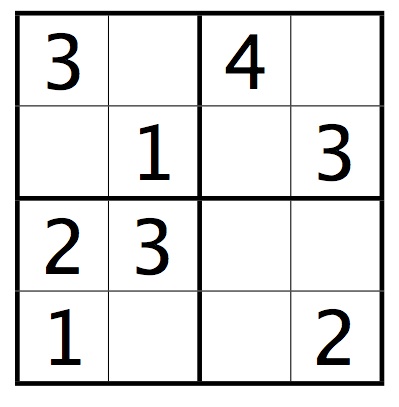
A staircase has n steps from bottom to top. A person
walks up the staircase, and can take up to m steps at a
time. Write a function
int stairs(int n, int m)
that returns the number of different ways in which the person may climb the stairs.
We wish to plant a garden with N beds in a row, each containing
either carrots or parsley. No two adjacent beds may contain parsley.
Write a method int garden(int n) that returns the number
of possible ways in which the garden can be planted.
You are given a set of N boxes. Each box i has height hi, width wi and depth di. Write a program that determines the maximum possible height of any stack of boxes, assuming that you can place box b on box c only if wb < wc and hb < hc. You may not rotate the boxes in any way.
Consider the following representation for directed weighted graphs. This class represents edges:
class Edge {
public int dest; // destination
public double weight;
}
We can represent a graph in adjacency-list representation by a jagged
array of type Edge[][]. If g is an array of this type,
then g[i] is a subarray of edges leading from the i-th vertex.
Write a method int[] longest(Edge[][] graph, int start, int
end) that takes a directed acyclic graph and finds the
longest weighted path from vertex start to vertex
end. The method should return a list of vertices along
the path, including start and end. If no
path exists between the vertices, return null.
Write a method that takes a connected undirected graph G, represented as a jagged array. The method should determine whether it is possible to color the graph with three colors (red, green, blue) such that no two adjacent vertices have a same color. If it is, it should print out a valid coloring.
Write a method that takes an undirected graph G (represented as a jagged array) with vertices numbered 1 .. N. The method should return the length of the longest path from vertex 1 to vertex N. A path cannot cannot contain the same vertex twice. No efficient algorithm is known for solving this problem, so you will need to perform an exhaustive search of all possible paths.
A mini-Sudoku puzzle looks like this:

To solve the puzzle, you must place a number from 1 to 4 in every square so that the numbers in every row, column, and mini-square are distinct.
Write a method that takes a mini-Sudoku puzzle as a 4 x 4 array of integers. Empty squares will be represented by the number 0. The method should return a solution to the puzzle (as a 4 x 4 array) if it can find one, otherwise null.